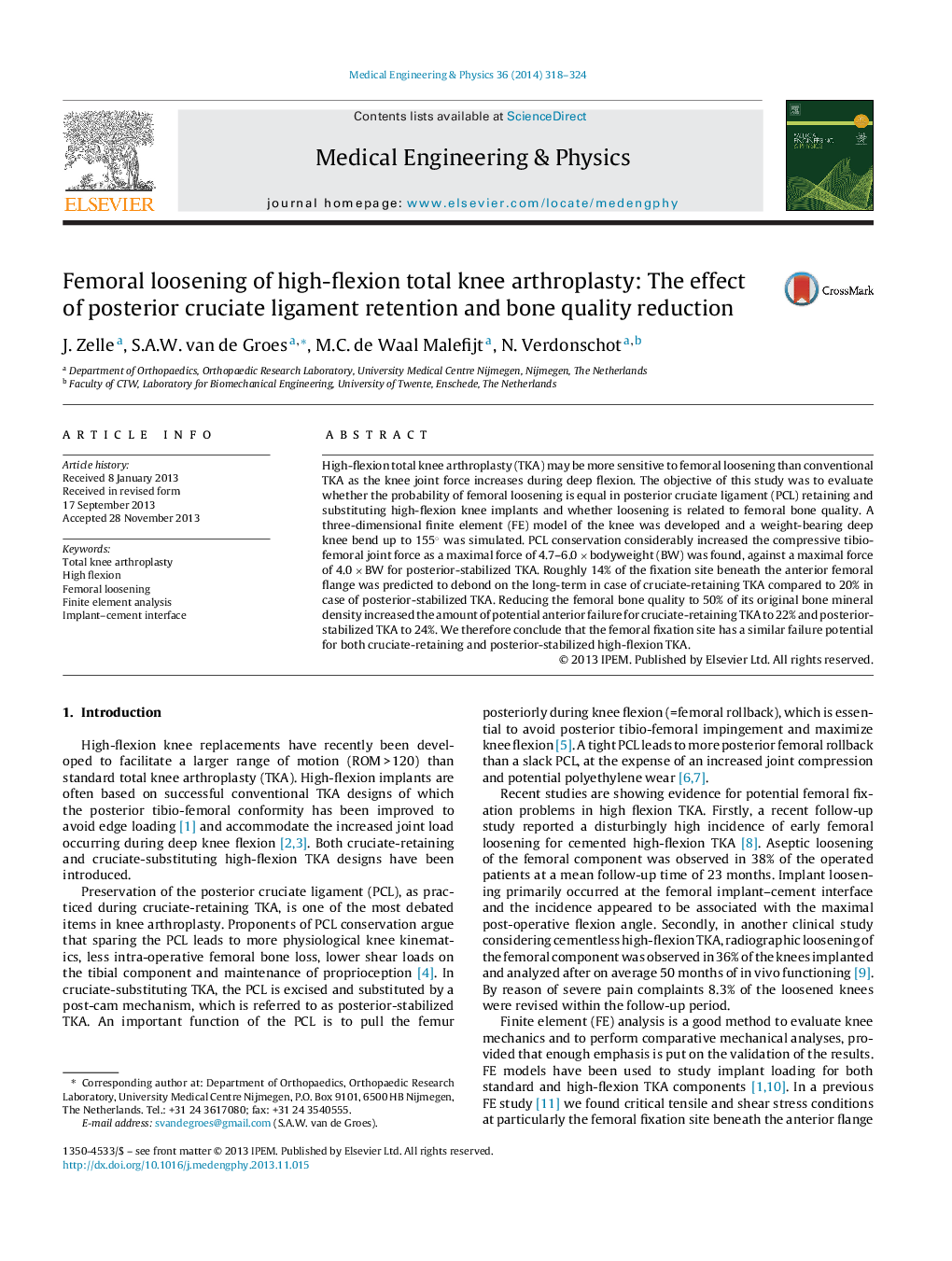| کد مقاله | کد نشریه | سال انتشار | مقاله انگلیسی | نسخه تمام متن |
|---|---|---|---|---|
| 876016 | 910820 | 2014 | 7 صفحه PDF | دانلود رایگان |
High-flexion total knee arthroplasty (TKA) may be more sensitive to femoral loosening than conventional TKA as the knee joint force increases during deep flexion. The objective of this study was to evaluate whether the probability of femoral loosening is equal in posterior cruciate ligament (PCL) retaining and substituting high-flexion knee implants and whether loosening is related to femoral bone quality. A three-dimensional finite element (FE) model of the knee was developed and a weight-bearing deep knee bend up to 155° was simulated. PCL conservation considerably increased the compressive tibio-femoral joint force as a maximal force of 4.7–6.0 × bodyweight (BW) was found, against a maximal force of 4.0 × BW for posterior-stabilized TKA. Roughly 14% of the fixation site beneath the anterior femoral flange was predicted to debond on the long-term in case of cruciate-retaining TKA compared to 20% in case of posterior-stabilized TKA. Reducing the femoral bone quality to 50% of its original bone mineral density increased the amount of potential anterior failure for cruciate-retaining TKA to 22% and posterior-stabilized TKA to 24%. We therefore conclude that the femoral fixation site has a similar failure potential for both cruciate-retaining and posterior-stabilized high-flexion TKA.
Journal: Medical Engineering & Physics - Volume 36, Issue 3, March 2014, Pages 318–324
